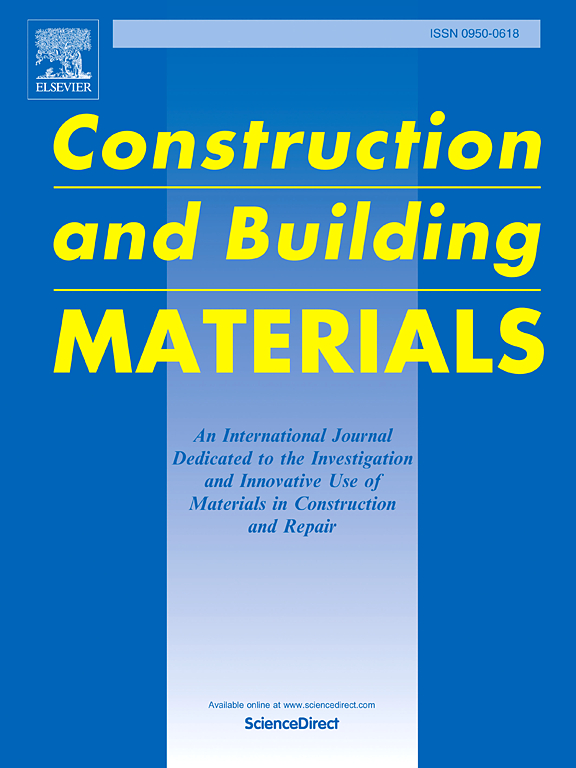Experimental and analytical evaluation of stabilizing bauxite residue bearing layers using cement kiln dust
IF 7.4
1区 工程技术
Q1 CONSTRUCTION & BUILDING TECHNOLOGY
引用次数: 0
Abstract
The accumulation of bauxite residue (BR), an alkaline byproduct of the Bayer process, presents an environmental challenge. This study introduces an innovative approach to address the disposal dilemma by utilizing cement kiln dust (CKD), a byproduct of cement manufacturing, as a stabilizing agent for BR, aiming towards an integrated circular economy in geotechnical applications. To achieve this goal, an extensive experimental program was executed to compare the particle size (PS), Atterberg limits (AL), moisture–density (MD), volume change (VC), and unconfined compressive strength (UCS) characteristics of treated and untreated BR. The results indicate enhancements in the BR-CKD properties including improvements in particle coarseness, reduction in swell potential, and increase in unconfined compressive strength; however, the plasticity of the mixtures remained unchanged, and the MD relationships deteriorated. An analytical evaluation of the allowable bearing capacity of the BR-CKD bearing layers showed an improvement of almost 3.5 times that of the untreated layers at a CKD% of 7.5 %.
求助全文
约1分钟内获得全文
求助全文
来源期刊

Construction and Building Materials
工程技术-材料科学:综合
CiteScore
13.80
自引率
21.60%
发文量
3632
审稿时长
82 days
期刊介绍:
Construction and Building Materials offers an international platform for sharing innovative and original research and development in the realm of construction and building materials, along with their practical applications in new projects and repair practices. The journal publishes a diverse array of pioneering research and application papers, detailing laboratory investigations and, to a limited extent, numerical analyses or reports on full-scale projects. Multi-part papers are discouraged.
Additionally, Construction and Building Materials features comprehensive case studies and insightful review articles that contribute to new insights in the field. Our focus is on papers related to construction materials, excluding those on structural engineering, geotechnics, and unbound highway layers. Covered materials and technologies encompass cement, concrete reinforcement, bricks and mortars, additives, corrosion technology, ceramics, timber, steel, polymers, glass fibers, recycled materials, bamboo, rammed earth, non-conventional building materials, bituminous materials, and applications in railway materials.
 求助内容:
求助内容: 应助结果提醒方式:
应助结果提醒方式:


